Tokuriki Tomikichirō: A pioneer of modern Japanese printmaking
Tokuriki Tomikichirō (1902–2000) was a renowned Japanese artist and printmaker, celebrated for his contributions to the Sōsaku Hanga (“creative print”) and Shin Hanga (“new print”) movements. His work bridged the gap between traditional Japanese woodblock printing techniques and modern artistic sensibilities, making him one of the most influential figures in the 20th-century revival of Japanese printmaking.
 Mt. Fuji from Tateho, from Thirty-six Views of Mt. Fuji, Tokuriki Tomikichiro, 1941. Source: ukiyo.e.orgꜛ
Mt. Fuji from Tateho, from Thirty-six Views of Mt. Fuji, Tokuriki Tomikichiro, 1941. Source: ukiyo.e.orgꜛ
Biography
Tokuriki Tomikichirō (徳力富吉郎) was born on March 22, 1902, in Kyoto, Japan. He grew up in a culturally rich environment deeply rooted in traditional Japanese art and craftsmanship. While some sources suggest that his family was involved in the creation of religious objects for temples, it is clear that the artistic atmosphere of Kyoto, steeped in ukiyo-e and traditional crafts, profoundly influenced Tokuriki from an early age. These elements became central themes in his work, shaping his approach to modern Japanese printmaking.
Tokuriki pursued formal education in the arts at the Kyoto City School of Fine Arts and Crafts and later at the Kyoto City Specialist School of Painting. Here, he trained in both traditional Japanese painting (Nihonga) and Western-style painting (Yōga), which provided him with a broad foundation in artistic techniques and styles. This dual training would play a significant role in his ability to blend traditional and modern elements in his prints.
After completing his studies, Tokuriki became deeply involved in the Shin Hanga movement, working to preserve and revive traditional woodblock printing techniques while also exploring new subjects and styles. He collaborated with some of the leading publishers of the time and produced prints that were widely admired for their technical excellence and artistic beauty.
In addition to his work in Shin Hanga, Tokuriki was a key figure in the Sōsaku Hanga movement, which emphasized the artist’s direct involvement in all stages of the printmaking process. Tokuriki founded his own publishing company, Matsukyu, where he produced and published his own works and those of other artists. He was also an influential teacher, mentoring a new generation of printmakers and ensuring the continuation of traditional techniques.
Tokuriki’s career spanned much of the 20th century, and he remained active as an artist and educator well into his later years. He passed away on March 1, 2000, leaving behind a rich legacy as one of the leading figures in modern Japanese printmaking.
Artistic style and significance
Tokuriki Tomikichirō is celebrated for his ability to merge traditional Japanese woodblock printing techniques with modern artistic elements, creating works that are both deeply rooted in Japanese culture and accessible to contemporary audiences. His prints are known for their meticulous craftsmanship, vibrant colors, and thoughtful compositions.
Fusion of tradition and modernity
Tokuriki’s work is characterized by a seamless integration of traditional Japanese aesthetics with modern influences. His training in both Nihonga and Yōga allowed him to draw from a wide range of techniques and styles, which he skillfully combined in his prints. He was particularly interested in landscapes and scenes of Kyoto, which he depicted with a sensitivity to both the natural beauty and cultural significance of the region.
 Shimogawara in the Evening, Tokuriki Tomikichiro, 1950s. Source: ukiyo.e.orgꜛ
Shimogawara in the Evening, Tokuriki Tomikichiro, 1950s. Source: ukiyo.e.orgꜛ
While Tokuriki was deeply committed to preserving the traditional techniques of ukiyo-e* and Shin Hanga, he was also innovative in his approach. He experimented with different compositions, perspectives, and color palettes, often infusing his works with a sense of modernity while maintaining the essence of traditional Japanese art. This ability to balance tradition and innovation made his work appealing to both Japanese and international audiences.
Contributions to Sōsaku Hanga
As a key figure in the Sōsaku Hanga movement, Tokuriki was dedicated to the idea that the artist should be involved in every stage of the printmaking process, from design to carving to printing. This philosophy was a departure from the traditional ukiyo-e approach, where these tasks were typically divided among specialists.
 Blue Mt. Fuji, from New Thirty-six Views of Mt. Fuji, Tokuriki Tomikichiro, c. 1950s. Source: ukiyo.e.orgꜛ
Blue Mt. Fuji, from New Thirty-six Views of Mt. Fuji, Tokuriki Tomikichiro, c. 1950s. Source: ukiyo.e.orgꜛ
Tokuriki’s involvement in the Sōsaku Hanga movement reflected his belief in the importance of artistic integrity and personal expression. His prints often depicted everyday scenes and landscapes, capturing the beauty of the ordinary and the fleeting moments of life. This focus on personal expression and individual creativity was a hallmark of the Sōsaku Hanga movement, and Tokuriki’s work exemplifies these ideals.
Educational impact and legacy
Beyond his own artistic achievements, Tokuriki Tomikichirō was a dedicated educator and mentor. He taught at the Kyoto Municipal School of Fine Arts and Crafts and Kyoto City Specialist School of Painting, where he influenced a generation of young artists. He also established the Matsukyu publishing company, which not only produced his own prints but also supported the work of other artists, contributing to the broader Sōsaku Hanga movement.
Tokuriki’s legacy is not only found in his own body of work but also in the continuation of traditional Japanese printmaking techniques that he helped to preserve and pass on to future generations. His efforts ensured that these techniques would not be lost to time but would continue to evolve and inspire new artists.
Notable works
Throughout his career, Tokuriki Tomikichirō produced numerous prints that are considered masterpieces of modern Japanese printmaking. Some of his most famous works include:
 Evening at Kaomise Kabuki Theatre, Tokuriki Tomikichiro, 1936. Source: ukiyo.e.orgꜛ
Evening at Kaomise Kabuki Theatre, Tokuriki Tomikichiro, 1936. Source: ukiyo.e.orgꜛ
 Kamo River in Rain, Tokuriki Tomikichiro, c. 1950s. Source: ukiyo.e.orgꜛ
Kamo River in Rain, Tokuriki Tomikichiro, c. 1950s. Source: ukiyo.e.orgꜛ
 Fushimi Doll Shop – Kyoto Twelve Months, Tokuriki Tomikichiro, 1950s. Source: ukiyo.e.orgꜛ
Fushimi Doll Shop – Kyoto Twelve Months, Tokuriki Tomikichiro, 1950s. Source: ukiyo.e.orgꜛ
 Samurai Armor, Tokuriki Tomikichiro, c. 1970s. Source: ukiyo.e.orgꜛ
Samurai Armor, Tokuriki Tomikichiro, c. 1970s. Source: ukiyo.e.orgꜛ
 Hozu River, Tokuriki Tomikichiro, c. 1950s. Source: ukiyo.e.orgꜛ
Hozu River, Tokuriki Tomikichiro, c. 1950s. Source: ukiyo.e.orgꜛ
 Mt. Hiei – Miyako Meisho, Tokuriki Tomikichiro, c. 1950s. Source: ukiyo.e.orgꜛ
Mt. Hiei – Miyako Meisho, Tokuriki Tomikichiro, c. 1950s. Source: ukiyo.e.orgꜛ
 Snow Covered Town, Tokuriki Tomikichirō, c. 1950s. Source: ukiyo.e.orgꜛ
Snow Covered Town, Tokuriki Tomikichirō, c. 1950s. Source: ukiyo.e.orgꜛ
 Uji Bridge, from Famous Historic Places and Holy Places, Tokuriki Tomikichiro, 1941. Source: ukiyo.e.orgꜛ
Uji Bridge, from Famous Historic Places and Holy Places, Tokuriki Tomikichiro, 1941. Source: ukiyo.e.orgꜛ
 Evening in Kyoto, Tokuriki Tomikichiro, 1050s. Source: ukiyo.e.orgꜛ
Evening in Kyoto, Tokuriki Tomikichiro, 1050s. Source: ukiyo.e.orgꜛ
 Mt Fuji from Gotenba in Summer, Tokuriki Tomikichiro, 1950*1970. Source: ukiyo.e.orgꜛ
Mt Fuji from Gotenba in Summer, Tokuriki Tomikichiro, 1950*1970. Source: ukiyo.e.orgꜛ
 Clear Autumn Weather at Otome Pass, Tokuriki Tomikichiro, 1939. Source: ukiyo.e.orgꜛ
Clear Autumn Weather at Otome Pass, Tokuriki Tomikichiro, 1939. Source: ukiyo.e.orgꜛ
 Nikko, Tokuriki Tomikichiro, 1950. Source: ukiyo.e.orgꜛ
Nikko, Tokuriki Tomikichiro, 1950. Source: ukiyo.e.orgꜛ
 Mt.Fuji at Nagao Pass, from Thirtysix Views of Mt.Fuji*, Tokuriki Tomikichiro, c. 1940. Source: ukiyo.e.orgꜛ
Mt.Fuji at Nagao Pass, from Thirtysix Views of Mt.Fuji*, Tokuriki Tomikichiro, c. 1940. Source: ukiyo.e.orgꜛ
 Kameyama Shrine, from Famous, Sacred and Historical Places, Tokuriki Tomikichiro, 1940. Source: ukiyo.e.orgꜛ
Kameyama Shrine, from Famous, Sacred and Historical Places, Tokuriki Tomikichiro, 1940. Source: ukiyo.e.orgꜛ
 Manai Waterfall, from Famous Historic Places and Holy Places, Tokuriki Tomikichiro, 1940. Source: ukiyo.e.orgꜛ
Manai Waterfall, from Famous Historic Places and Holy Places, Tokuriki Tomikichiro, 1940. Source: ukiyo.e.orgꜛ
 Sunset at Mitsu, from New Thirty-six Views of Mt. Fuji, Tokuriki Tomikichiro, 1973. Source: ukiyo.e.orgꜛ
Sunset at Mitsu, from New Thirty-six Views of Mt. Fuji, Tokuriki Tomikichiro, 1973. Source: ukiyo.e.orgꜛ
 Nara Kasuga Shrine, Tokuriki Tomikichiro, 1941. Source: ukiyo.e.orgꜛ
Nara Kasuga Shrine, Tokuriki Tomikichiro, 1941. Source: ukiyo.e.orgꜛ
 Flying Cranes, Tokuriki Tomikichiro, 1950s. Source: ukiyo.e.orgꜛ
Flying Cranes, Tokuriki Tomikichiro, 1950s. Source: ukiyo.e.orgꜛ
 Osaka Castle, from Famous Historic Places and Holy Places, Tokuriki Tomikichiro, 1940. Source: ukiyo.e.orgꜛ
Osaka Castle, from Famous Historic Places and Holy Places, Tokuriki Tomikichiro, 1940. Source: ukiyo.e.orgꜛ
 The beach of Satta-touge, Tokuriki Tomikichiro, 1940. Source: ukiyo.e.orgꜛ
The beach of Satta-touge, Tokuriki Tomikichiro, 1940. Source: ukiyo.e.orgꜛ
 Kawakami Shrine, from Famous Historic Places and Holy Places, Tokuriki Tomikichiro, 1941. Source: ukiyo.e.orgꜛ
Kawakami Shrine, from Famous Historic Places and Holy Places, Tokuriki Tomikichiro, 1941. Source: ukiyo.e.orgꜛ
 Mt. Fuji from a Road, from Thirtysix Views of Mt.Fuji*, Tokuriki Tomikichiro, 1941. Source: ukiyo.e.orgꜛ
Mt. Fuji from a Road, from Thirtysix Views of Mt.Fuji*, Tokuriki Tomikichiro, 1941. Source: ukiyo.e.orgꜛ
 Heian Shrine – Seichi Shiseki Meisho, Tokuriki Tomikichiro, 1930. Source: ukiyo.e.orgꜛ
Heian Shrine – Seichi Shiseki Meisho, Tokuriki Tomikichiro, 1930. Source: ukiyo.e.orgꜛ
 Aso Shrine, from Famous, Sacred and Historical Places, Tokuriki Tomikichiro, c. 1930. Source: ukiyo.e.orgꜛ
Aso Shrine, from Famous, Sacred and Historical Places, Tokuriki Tomikichiro, c. 1930. Source: ukiyo.e.orgꜛ
 Rain At Kiraba (at the base of Mt. Fuji), Tokuriki Tomikichiro, 1939. Source: ukiyo.e.orgꜛ
Rain At Kiraba (at the base of Mt. Fuji), Tokuriki Tomikichiro, 1939. Source: ukiyo.e.orgꜛ
 Biwa Lake, from Famous, Sacred and Historical Places, Tokuriki Tomikichiro, 1940. Source: ukiyo.e.orgꜛ
Biwa Lake, from Famous, Sacred and Historical Places, Tokuriki Tomikichiro, 1940. Source: ukiyo.e.orgꜛ
 Sennichimae Hozen-ji, Tokuriki Tomikichiro, 1950. Source: ukiyo.e.orgꜛ
Sennichimae Hozen-ji, Tokuriki Tomikichiro, 1950. Source: ukiyo.e.orgꜛ
 Fuji from Iwabuchi, Tokuriki Tomikichiro, 1939. Source: ukiyo.e.orgꜛ
Fuji from Iwabuchi, Tokuriki Tomikichiro, 1939. Source: ukiyo.e.orgꜛ
 Sesshu Sumiyoshitaisha Shrine, Tokuriki Tomikichiro, 1941. Source: ukiyo.e.orgꜛ
Sesshu Sumiyoshitaisha Shrine, Tokuriki Tomikichiro, 1941. Source: ukiyo.e.orgꜛ
 Lake Yamanaka in Winter, Tokuriki Tomikichiro, c. 1950s. Source: ukiyo.e.orgꜛ
Lake Yamanaka in Winter, Tokuriki Tomikichiro, c. 1950s. Source: ukiyo.e.orgꜛ
 Bujyo-ji in Kitahana Rakuhoku, Kyoto, Tokuriki Tomikichiro, 1960. Source: ukiyo.e.orgꜛ
Bujyo-ji in Kitahana Rakuhoku, Kyoto, Tokuriki Tomikichiro, 1960. Source: ukiyo.e.orgꜛ
 Heian Jingu Shrine, from 8 Views of Kyoto, Tokuriki Tomikichiro, c. 1950s. Source: ukiyo.e.orgꜛ
Heian Jingu Shrine, from 8 Views of Kyoto, Tokuriki Tomikichiro, c. 1950s. Source: ukiyo.e.orgꜛ
 The Sea at Izu, Tokuriki Tomikichiro, 1939. Source: ukiyo.e.orgꜛ
The Sea at Izu, Tokuriki Tomikichiro, 1939. Source: ukiyo.e.orgꜛ
 Golden Pavilion, Kinkaku-ji, Tokuriki Tomikichiro. Source: ukiyo.e.orgꜛ
Golden Pavilion, Kinkaku-ji, Tokuriki Tomikichiro. Source: ukiyo.e.orgꜛ
 Miyazaki Shrine, from Famous, Sacred and Historical Places, Tokuriki Tomikichiro, 1940. Source: ukiyo.e.orgꜛ
Miyazaki Shrine, from Famous, Sacred and Historical Places, Tokuriki Tomikichiro, 1940. Source: ukiyo.e.orgꜛ
 Supper Vender at Night, Tokuriki Tomikichiro, 1951. Source: ukiyo.e.orgꜛ
Supper Vender at Night, Tokuriki Tomikichiro, 1951. Source: ukiyo.e.orgꜛ
 Gion Festival, form Famous Places in Kyoto, Tokuriki Tomikichiro, 1950s. Source: ukiyo.e.orgꜛ
Gion Festival, form Famous Places in Kyoto, Tokuriki Tomikichiro, 1950s. Source: ukiyo.e.orgꜛ
 Yamata Shigisan Shrine, from Famous Historic Places and Holy Places, Tokuriki Tomikichiro, 1949. Source: ukiyo.e.orgꜛ
Yamata Shigisan Shrine, from Famous Historic Places and Holy Places, Tokuriki Tomikichiro, 1949. Source: ukiyo.e.orgꜛ
 Fine Weather After The Storm In Tokyo Ochanomizu, Tokuriki Tomikichiro, 1939. Source: ukiyo.e.orgꜛ
Fine Weather After The Storm In Tokyo Ochanomizu, Tokuriki Tomikichiro, 1939. Source: ukiyo.e.orgꜛ
 Great Buddha at Kamakura, Tokuriki Tomikichiro, 1940. Source: ukiyo.e.orgꜛ
Great Buddha at Kamakura, Tokuriki Tomikichiro, 1940. Source: ukiyo.e.orgꜛ
 Four Seasons – Summer, Tokuriki Tomikichiro, 1977. Source: ukiyo.e.orgꜛ
Four Seasons – Summer, Tokuriki Tomikichiro, 1977. Source: ukiyo.e.orgꜛ
 Mt. Unebi, from 8 Views of Yamato, Tokuriki Tomikichiro, 1942. Source: ukiyo.e.orgꜛ
Mt. Unebi, from 8 Views of Yamato, Tokuriki Tomikichiro, 1942. Source: ukiyo.e.orgꜛ
 Odawara Castle, from Famous Historic Places and Holy Places, Tokuriki Tomikichiro, 1941. Source: ukiyo.e.orgꜛ
Odawara Castle, from Famous Historic Places and Holy Places, Tokuriki Tomikichiro, 1941. Source: ukiyo.e.orgꜛ
 Unknown title, Tokuriki Tomikichiro. Source: ukiyo.e.orgꜛ
Unknown title, Tokuriki Tomikichiro. Source: ukiyo.e.orgꜛ
 New Green Leaves at Ohara, Tokuriki Tomikichiro, 1936. Source: ukiyo.e.orgꜛ
New Green Leaves at Ohara, Tokuriki Tomikichiro, 1936. Source: ukiyo.e.orgꜛ
 Kitano shrine, from 20 Views of Kyoto, Tokuriki Tomikichiro, 1950s*1960. Source: ukiyo.e.orgꜛ
Kitano shrine, from 20 Views of Kyoto, Tokuriki Tomikichiro, 1950s*1960. Source: ukiyo.e.orgꜛ
 Horyu-ji, Tokuriki Tomikichiro, 1930. Source: ukiyo.e.orgꜛ
Horyu-ji, Tokuriki Tomikichiro, 1930. Source: ukiyo.e.orgꜛ
 Fuji from the Pine Forest at Harajiku, Tokuriki Tomikichiro, 1939. Source: ukiyo.e.orgꜛ
Fuji from the Pine Forest at Harajiku, Tokuriki Tomikichiro, 1939. Source: ukiyo.e.orgꜛ
 Mr. Saigo and His Dog, from New Famous Places of Tokyo, Tokuriki Tomikichiro, 1939. Source: ukiyo.e.orgꜛ
Mr. Saigo and His Dog, from New Famous Places of Tokyo, Tokuriki Tomikichiro, 1939. Source: ukiyo.e.orgꜛ
 Kyoraku Nonomiya Shrine, Tokuriki Tomikichiro, 1960. Source: ukiyo.e.orgꜛ
Kyoraku Nonomiya Shrine, Tokuriki Tomikichiro, 1960. Source: ukiyo.e.orgꜛ
 Hyogo Minatogawa Shrine, Tokuriki Tomikichiro, 1941. Source: ukiyo.e.orgꜛ
Hyogo Minatogawa Shrine, Tokuriki Tomikichiro, 1941. Source: ukiyo.e.orgꜛ
 Summer at Kiyomizu Temple, Tokuriki Tomikichiro, c. 1930*1950. Source: ukiyo.e.orgꜛ
Summer at Kiyomizu Temple, Tokuriki Tomikichiro, c. 1930*1950. Source: ukiyo.e.orgꜛ
 Izumo Shrine, from Famous, Sacred and Historical Places, Tokuriki Tomikichiro, 1941. Source: ukiyo.e.orgꜛ
Izumo Shrine, from Famous, Sacred and Historical Places, Tokuriki Tomikichiro, 1941. Source: ukiyo.e.orgꜛ
 Water Mill and Mt. Fuji, Tokuriki Tomikichiro, 1930*1940. Source: ukiyo.e.orgꜛ
Water Mill and Mt. Fuji, Tokuriki Tomikichiro, 1930*1940. Source: ukiyo.e.orgꜛ
 Senpubashi, Tokuriki Tomikichiro, 1950. Source: ukiyo.e.orgꜛ
Senpubashi, Tokuriki Tomikichiro, 1950. Source: ukiyo.e.orgꜛ
 Matsue Castle, from Famous Historic Places and Holy Places, Tokuriki Tomikichiro, 1941. Source: ukiyo.e.orgꜛ
Matsue Castle, from Famous Historic Places and Holy Places, Tokuriki Tomikichiro, 1941. Source: ukiyo.e.orgꜛ
 Mt. Fuji from Izu, from Thirty-six Views of Mt. Fuji, Tokuriki Tomikichiro, 1941. Source: ukiyo.e.orgꜛ
Mt. Fuji from Izu, from Thirty-six Views of Mt. Fuji, Tokuriki Tomikichiro, 1941. Source: ukiyo.e.orgꜛ
 Sanjo Bridge in Sunset Glow, Tokuriki Tomikichiro, 1950s. Source: ukiyo.e.orgꜛ
Sanjo Bridge in Sunset Glow, Tokuriki Tomikichiro, 1950s. Source: ukiyo.e.orgꜛ
 Spring in Shinshu, Tokuriki Tomikichiro, 1977. Source: ukiyo.e.orgꜛ
Spring in Shinshu, Tokuriki Tomikichiro, 1977. Source: ukiyo.e.orgꜛ
 Sanjo Awataguchi Shoren-in, Tokuriki Tomikichiro, 1978. Source: ukiyo.e.orgꜛ
Sanjo Awataguchi Shoren-in, Tokuriki Tomikichiro, 1978. Source: ukiyo.e.orgꜛ
 Mt. Fuji in the Clouds, from Thirtysix Views of Mt. Fuji*, Tokuriki Tomikichiro, 1941. Source: ukiyo.e.orgꜛ
Mt. Fuji in the Clouds, from Thirtysix Views of Mt. Fuji*, Tokuriki Tomikichiro, 1941. Source: ukiyo.e.orgꜛ
 Uji River, Tokuriki Tomikichiro, 1950s. Source: ukiyo.e.orgꜛ
Uji River, Tokuriki Tomikichiro, 1950s. Source: ukiyo.e.orgꜛ
 Silver Pavilion, from Kyoto Twelve Months, Tokuriki Tomikichiro, 1950s. Source: ukiyo.e.orgꜛ
Silver Pavilion, from Kyoto Twelve Months, Tokuriki Tomikichiro, 1950s. Source: ukiyo.e.orgꜛ
 Fuji from Akinono, Tokuriki Tomikichiro, 1939. Source: ukiyo.e.orgꜛ
Fuji from Akinono, Tokuriki Tomikichiro, 1939. Source: ukiyo.e.orgꜛ
 Fuji and Pines, from 36 Views of Mt. Fuji, Tokuriki Tomikichiro, 1950s. Source: ukiyo.e.orgꜛ
Fuji and Pines, from 36 Views of Mt. Fuji, Tokuriki Tomikichiro, 1950s. Source: ukiyo.e.orgꜛ
 Shiroyama, from Famous Historic Places and Holy Places, Tokuriki Tomikichiro, 1940. Source: ukiyo.e.orgꜛ
Shiroyama, from Famous Historic Places and Holy Places, Tokuriki Tomikichiro, 1940. Source: ukiyo.e.orgꜛ
 Fukuhara Shrine, from Famous Historic Places and Holy Places, Tokuriki Tomikichiro, 1940. Source: ukiyo.e.orgꜛ
Fukuhara Shrine, from Famous Historic Places and Holy Places, Tokuriki Tomikichiro, 1940. Source: ukiyo.e.orgꜛ
 Snow at Kiyomizu Temple, Tokuriki Tomikichiro. Source: ukiyo.e.orgꜛ
Snow at Kiyomizu Temple, Tokuriki Tomikichiro. Source: ukiyo.e.orgꜛ
 Nawa Shrine, from Famous, Sacred and Historical Places, Tokuriki Tomikichiro, 1940. Source: ukiyo.e.orgꜛ
Nawa Shrine, from Famous, Sacred and Historical Places, Tokuriki Tomikichiro, 1940. Source: ukiyo.e.orgꜛ
 Looking at Hōeizan from the 4th Camp of Mount Fuji, from the series ThirtySix Views of Mount Fuji*, Tokuriki Tomikichiro. Source: ukiyo.e.orgꜛ
Looking at Hōeizan from the 4th Camp of Mount Fuji, from the series ThirtySix Views of Mount Fuji*, Tokuriki Tomikichiro. Source: ukiyo.e.orgꜛ
 Mt Fuji and Torii in Spring, Tokuriki Tomikichiro, 1939. Source: ukiyo.e.orgꜛ
Mt Fuji and Torii in Spring, Tokuriki Tomikichiro, 1939. Source: ukiyo.e.orgꜛ
 Genesis 1:20 – Birds over the Earth, Tokuriki Tomikichiro, 1967. Source: ukiyo.e.orgꜛ
Genesis 1:20 – Birds over the Earth, Tokuriki Tomikichiro, 1967. Source: ukiyo.e.orgꜛ
 Horyu-ji, from *Famous, Sacred and Historical Places – *, Tokuriki Tomikichiro, 1941. Source: ukiyo.e.orgꜛ
Horyu-ji, from *Famous, Sacred and Historical Places – *, Tokuriki Tomikichiro, 1941. Source: ukiyo.e.orgꜛ
 Distant View of Atagoyama, Tokuriki Tomikichiro, 1936. Source: ukiyo.e.orgꜛ
Distant View of Atagoyama, Tokuriki Tomikichiro, 1936. Source: ukiyo.e.orgꜛ
 Nijubashi Bridge, Tokuriki Tomikichiro, 1950s. Source: ukiyo.e.orgꜛ
Nijubashi Bridge, Tokuriki Tomikichiro, 1950s. Source: ukiyo.e.orgꜛ
 Houses in Kurashiki, Tokuriki Tomikichiro, 1950s. Source: ukiyo.e.orgꜛ
Houses in Kurashiki, Tokuriki Tomikichiro, 1950s. Source: ukiyo.e.orgꜛ
 Kamakura Shrine, from Famous, Sacred and Historical Places, Tokuriki Tomikichiro, 1941. Source: ukiyo.e.orgꜛ
Kamakura Shrine, from Famous, Sacred and Historical Places, Tokuriki Tomikichiro, 1941. Source: ukiyo.e.orgꜛ
 Hiroshima Daihonei, Tokuriki Tomikichiro, 1941. Source: ukiyo.e.orgꜛ
Hiroshima Daihonei, Tokuriki Tomikichiro, 1941. Source: ukiyo.e.orgꜛ
 Kumamoto Castle, from Famous Historic and Sacred Places, Tokuriki Tomikichiro, 1941. Source: ukiyo.e.orgꜛ
Kumamoto Castle, from Famous Historic and Sacred Places, Tokuriki Tomikichiro, 1941. Source: ukiyo.e.orgꜛ
 Harvest, from Thirty-six Views of Mt.Fuji, Tokuriki Tomikichiro, 1941. Source: ukiyo.e.orgꜛ
Harvest, from Thirty-six Views of Mt.Fuji, Tokuriki Tomikichiro, 1941. Source: ukiyo.e.orgꜛ
 Kyoto Imperial Palace, from 8 Views of Kyoto, Tokuriki Tomikichiro, 1950s. Source: ukiyo.e.orgꜛ
Kyoto Imperial Palace, from 8 Views of Kyoto, Tokuriki Tomikichiro, 1950s. Source: ukiyo.e.orgꜛ
 Golden Pavilion in the Snow, from 15 Views of Kyoto, Tokuriki Tomikichiro, 1950s. Source: ukiyo.e.orgꜛ
Golden Pavilion in the Snow, from 15 Views of Kyoto, Tokuriki Tomikichiro, 1950s. Source: ukiyo.e.orgꜛ
 Fuji from Numazu Kawaguchi, Tokuriki Tomikichiro, 1939. Source: ukiyo.e.orgꜛ
Fuji from Numazu Kawaguchi, Tokuriki Tomikichiro, 1939. Source: ukiyo.e.orgꜛ
 Mt. Fuji and Lake Motosu, Tokuriki Tomikichiro, 1950s. Source: ukiyo.e.orgꜛ
Mt. Fuji and Lake Motosu, Tokuriki Tomikichiro, 1950s. Source: ukiyo.e.orgꜛ
 NishiHongan-ji*, Tokuriki Tomikichiro, 1936. Source: ukiyo.e.orgꜛ
NishiHongan-ji*, Tokuriki Tomikichiro, 1936. Source: ukiyo.e.orgꜛ
 Springcolors at Gion, from 15 Views of Kyoto, Tokuriki Tomikichiro, c. 1950. Source: ukiyo.e.orgꜛ
Springcolors at Gion, from 15 Views of Kyoto, Tokuriki Tomikichiro, c. 1950. Source: ukiyo.e.orgꜛ
 4 Seasons of Kyoto – Sanjo Bridge, Tokuriki Tomikichiro, 1950s. Source: ukiyo.e.orgꜛ
4 Seasons of Kyoto – Sanjo Bridge, Tokuriki Tomikichiro, 1950s. Source: ukiyo.e.orgꜛ
Conclusion
Tokuriki Tomikichirō is celebrated as a visionary in modern Japanese printmaking, whose work bridged the gap between traditional techniques and modern artistic expression. His prints, characterized by their meticulous craftsmanship, vibrant colors, and thoughtful compositions, continue to be highly regarded for their artistic beauty and cultural significance. Tokuriki’s legacy as an artist, educator, and innovator ensures that his contributions to Japanese art will be remembered and cherished for generations to come.
References and further reading
- Chris Uhlenbeck, Jim Dwinger, Philo Ouweleen, Shin Hanga - Die »Neuen Drucke« Japans 1900-1950, 2022, Hatje Cantz, ISBN: 9783775752190
- Helen Merritt, Modern Japanese Woodblock Prints - The Early Years, 1990, University of Hawaii Press, ISBN: 9780824812003
- Richard O’Hara, Historic Sites & Sanctuaries: Fifty Illustrations by Tomikichirō Tokuriki, 2021, Independently published, ISBN: 979-8498203614
- Richard O’Hara, Miniature Masterpieces: By Tomikichirō Tokuriki, 2022, Independently published, ISBN: 979-8492591168
- Richard O’Hara, Magnificent Fuji: Thirty-Six Views by Tomikichirō Tokuriki, 2021, Independently published, ISBN: 979-8492591168
- Wikipedia article on Tokuriki Tomikichirō (German)ꜛ
- artelino.comꜛ
- viewingjapaneseprints.netꜛ
- Tokuriki Tomikichirō in ukiyo-e.orgꜛ
- roningallery.comꜛ
- moonlitseaprints.comꜛ

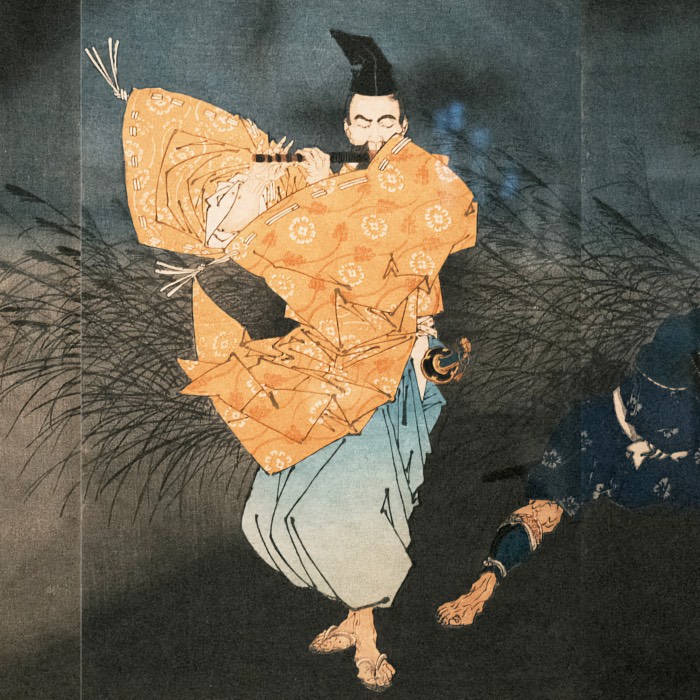
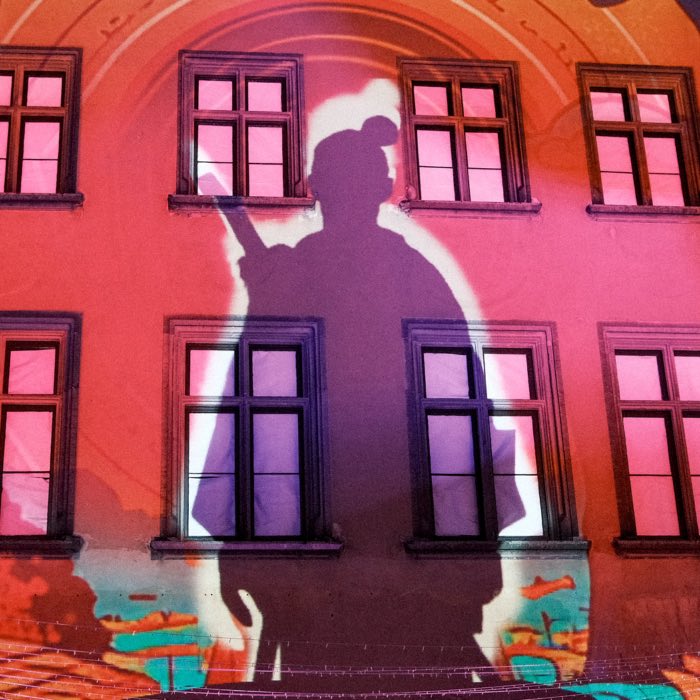
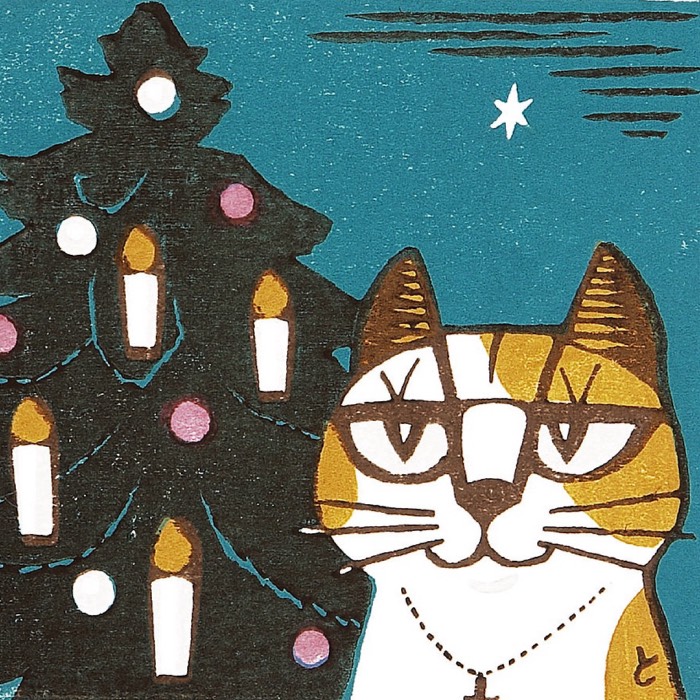
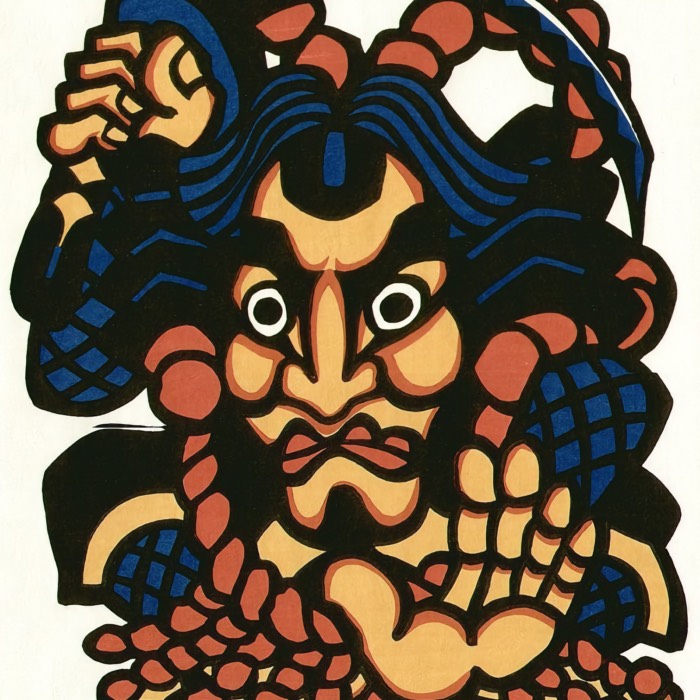
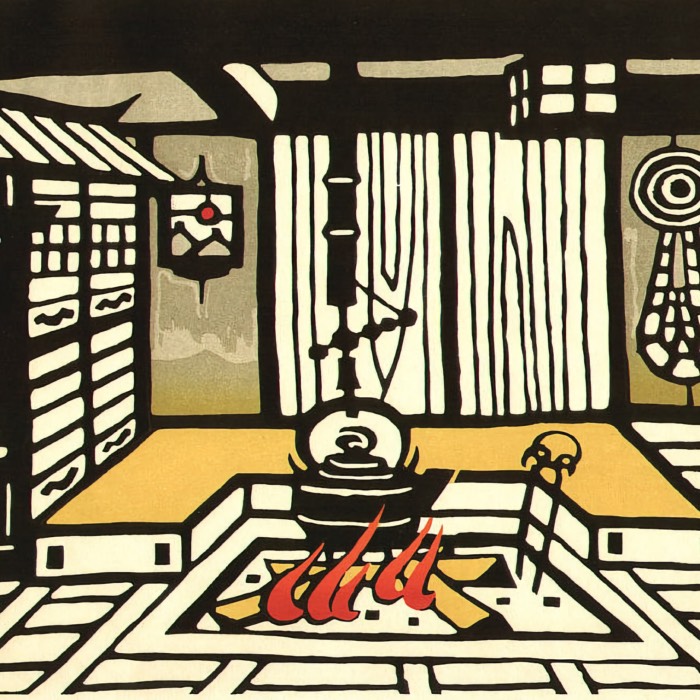
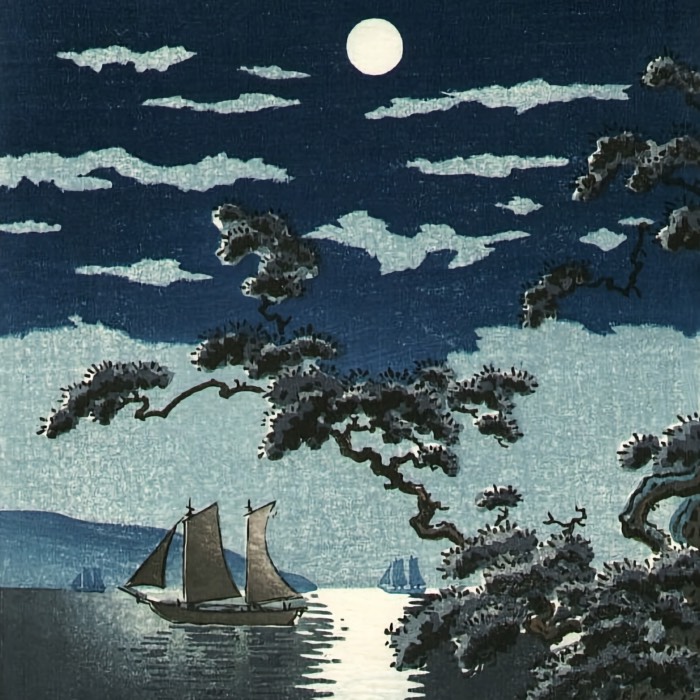
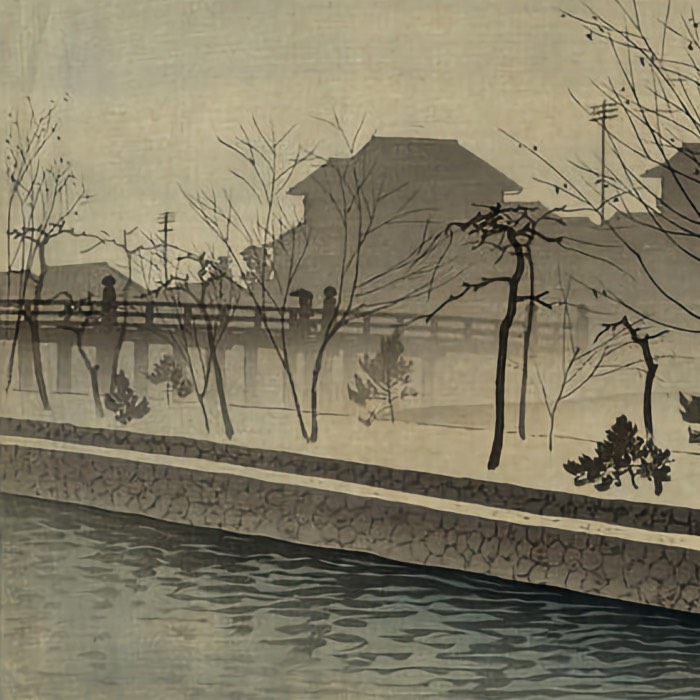
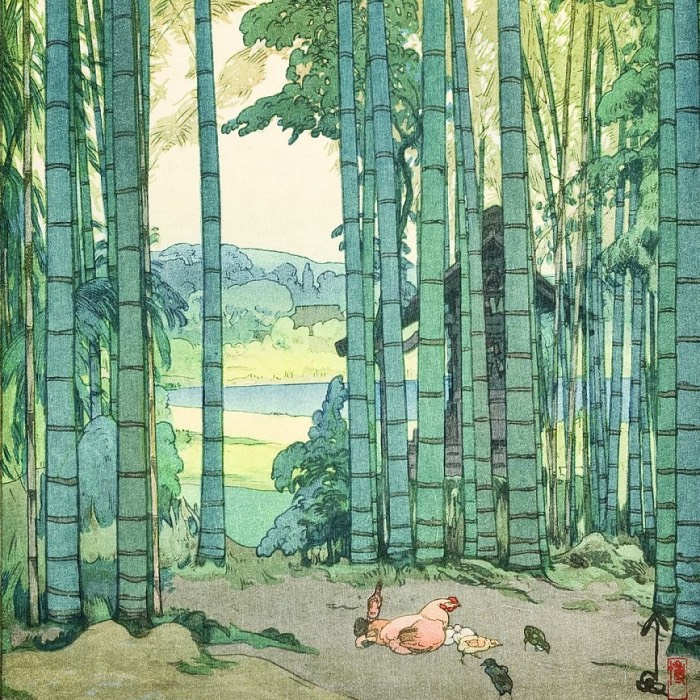
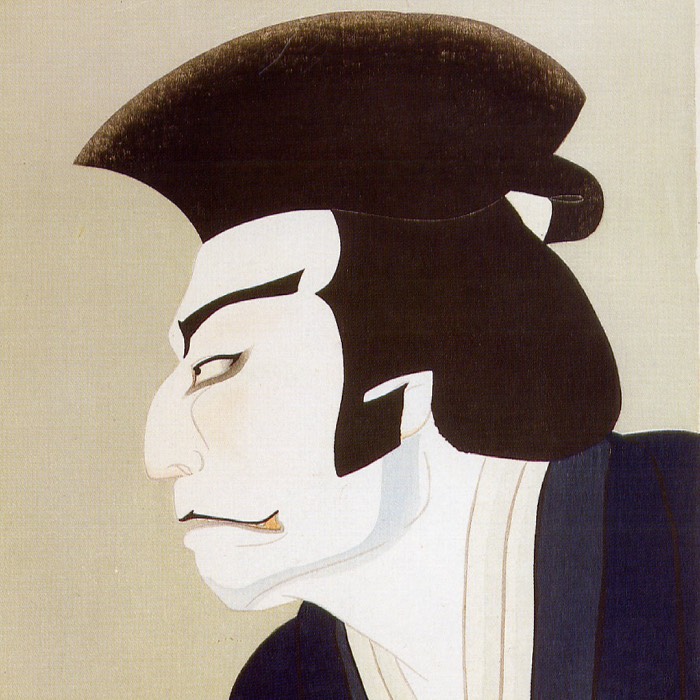
comments